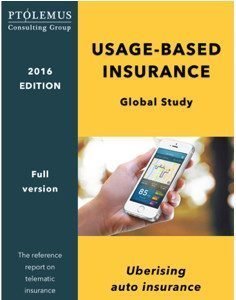The rise and rise of telematics in insurance – worldwide
Today, as we launch the 2013 edition of the UBI Global Study, we estimate the number of vehicles insured under UBI policies at 5 million globally, 2,5 million of which are in the US.
For the motor insurance sector, the €3.6 billion in premiums generated by UBI policies in 2013 is only a drop in the pool. This drop is, however, creating very big waves in the insurance world.
In order to compete, actuaries are having to quickly learn how to use new, varied, multi-source risk criteria. Car insurance price setting is becoming fairer, more personal. The segments are becoming smaller, and the premium calculation models are changing from yearly to monthly – and trending rapidly towards daily discount processing.
In turn, this is radically transforming the relationship between motor insurers and their drivers. Smartphone apps, direct online sales, social networks and more targeted agent networks are creating constant contact with the brands. New service, relationship and 2-way communications management skills and strategies are being learned.
The competition around the use of new telematics based insurance models is accelerating and diversifying. UBI is an extremely potent sales tool to acquire new, safe drivers in a given segment. Insurers unable to offer such products will lose out immediately and – worse – will be left with the riskier drivers in these segments.
The sales strategies have taken various directions, but most insurers have decided to hide the device from their communications and websites. The assumption is always that the mention of tracking should be avoided at all cost. Yet two very successful models have done just the opposite, basing their entire communications on the device; one with the angle that the device is there to prove the driver’s worth, the other with a communication line around the box being there to protect the driver in case of an accident.
For better or worse, the device has been at the centre of the insurers’ preoccupations when analysing the opportunities and barriers to UBI entry. We have analysed the device strategy in detail in the UBI Global study. It is essential to base a UBI service strategy on its offer and communications angle first. At the same time, the business model will depend entirely on the device type. For example, the biggest financial win for insurers in selling telematics insurance is in claims reduction and better management of the cost of these claims. Yet half the policies in place at the moment do not allow for such gains because the device does not support the necessary requirement or does not always stay in the vehicle.
Today, the conversation about the device is shifting towards the smartphone. We expect the smartphone to become a predominant feature in the vast majority of programmes, first as a communication tool and driver feedback platform, then as a service platform for third party location based applications, and third as a data probe used in conjunction with a low cost device in the vehicle.
This last solution has the potential to create a wave of new UBI service models with the flexibility to use various types of driver data during the policy period and to incrementally promote the use of a more permanent device in the vehicle once the benefits are demonstrated and accepted.
For these reasons, we believe there is a strong business case for usage-based insurance to spread globally, even in countries where premiums are comparatively low. After Australia, Canada and more recently, India, a number of new markets will experience telematics in the coming months, notably in Latin America and Russia.
In these countries and others, UBI will be used as a formidable recipe to break against established players and win profitable customers. In fact, we estimate that by 2020, UBI policies will achieve a global market share of 10%, with as much as 17% market penetration in the US.
All the study’s key results and much more can be downloaded from the 2013 UBI Global Study FREE Abstract.

